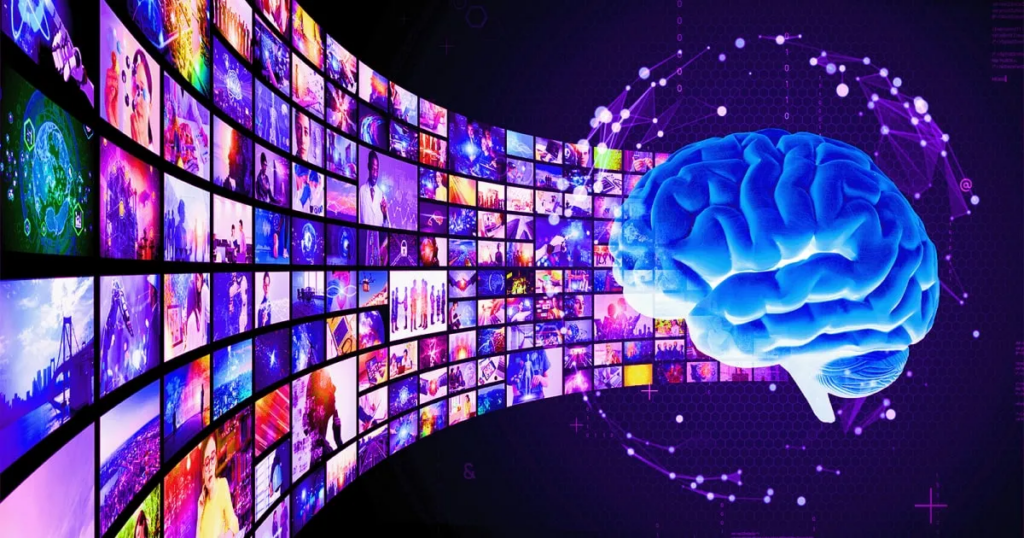
Artificial intelligence (AI) has quickly spread into the creative sectors in recent years, transforming how we create music, photographs, and, more lately, videos. AI-powered video creation technologies have made it feasible to create cinematic-quality graphics, animations, and synthetic characters from text prompts, audio snippets, or even static images. Previously, this process was a resource-intensive procedure that was only available to experts and studios.
AI video generators are changing the way content is created as the demand for video content rises on sites like YouTube, TikTok, Instagram, and enterprise applications like marketing, education, and training. We’ll go over the definition of AI video generating, the top technologies available, their capabilities, applications, and what lies ahead in this blog article.
What Is AI Video Generation?
AI video generation is the process of producing or improving video content using machine learning algorithms. This could mean several things depending on the tool:
- Creating fully animated videos from text
- Making talking head avatars out of text or audio
- Adding animation to still photos or characters
- Upscaling, color grading, or editing video automatically
- Multilingual video dubbing and translation
Deep learning methods, such as Generative Adversarial Networks (GANs), Transformers, and Diffusion models, which have been trained on enormous datasets of speech, video, and facial motion, power these systems.
Top AI Video Generation Tools
1. Runway ML (Gen-2) :
Best for: Creative video synthesis, realistic motion, and text-to-video creation
- One of the earliest AI models that can create brief videos from text descriptions is Runway’s Gen-2.
- A few seconds of cinematic footage can be obtained by users by entering a prompt such as “A drone flying over a dense jungle at sunset.”
- enables the conversion of a real video into an animation or sketch using the video-to-video style transfer feature.
- Perfect for content producers, marketers, and filmmakers.
Strengths: Integration with editing pipelines, beautiful graphics, and an intuitive interface
Limitations: The movie is just 4–8 seconds long and is currently in its early stages of realism.
2. Pika Labs :
Best for: Creative storytelling, character animation, and stylized videos
- Users can create videos with characters, settings, and dynamic movement by entering text or images into Pika.ai.
- includes artistic genres such as surreal, comic book, anime, and film.
- Excellent for motion-based artwork, fantasy graphics, and explainer videos.
Strengths: Exceptional motion dynamics and a broad variety of graphic styles
Limitations: Mostly stylized rather than photorealistic; realism is constantly developing.
3. HeyGen :
Best for: Multilingual material, voice cloning, and marketing videos
- With HeyGen, you can make realistic-looking avatars and synchronize them with your voice or a voice clone.
- It is excellent for worldwide outreach because it has dubbing and auto-translation features.
- A little video clip can be used to create unique avatars.
Advantages: Excellent lip-synch, lifelike avatars, and marketing-friendly
Limitations: Speech-based content works better than action sequences.
4. Kaiber AI :
Best for: Social media visuals, motion graphics, and music videos
- With the use of styles like fantasy, sci-fi, abstract, or cinematic, Kaiber may transform still photographs into dynamic films.
- It is used by artists to animate digital collages, concept art, and record covers.
- AI interpolates frames to mimic zooms and fluid motion.
Strengths: Integration of music, control over animation, and artistic inventiveness
Limitations: Unsuitable for narrative or conversational content
How AI Video Generation Works
1. Text-to-Video :
Using large language and vision models, the system interprets a prompt (e.g., “a cat jumping across rooftops”) and generates corresponding visual content frame by frame. This is similar to how image generators like DALL·E or Midjourney work but extended to time and motion.
2. Avatar and Lip Sync :
AI scans a facial model and maps speech patterns to generate synchronized lip, eye, and head movements. Some tools even allow voice cloning so the avatar sounds like you.
3. Video Stylization :
Taking real footage and applying artistic or thematic filters, much like Instagram or TikTok, but at a higher level using deep neural networks.
4. Frame Interpolation and Motion AI :
Used to animate still images by generating “in-between” frames. This makes slow pans, zooms, or dynamic reveals possible from flat art.
Advantages of AI Video Generation
- Speed: What once took weeks of planning, filming, and editing can now be done in minutes.
- Cost-Effective: No need for actors, studios, or expensive equipment.
- Scalable: Perfect for producing content at volume, especially across languages or formats.
- Accessible: Creators with limited resources can produce professional-looking videos.
The Future of AI Video Generation
The rate at which AI video tools are being developed is astounding. In the upcoming two to three years, we can anticipate:
- longer, more cohesive sequences
- Creating videos in real time using motion or voice inputs
- Avatars with emotions that may act expressively
- smooth interaction with creative software, gaming engines, and AR/VR
- More robust protections against deepfakes and misuse
Large-scale video generation models are already being invested in by businesses like OpenAI, Google, and Meta, indicating that everyone may soon be able to access high-quality, long-form video.
A new era of creativity is being ushered in by AI video generating tools, which allow anyone to create engaging video content, independent of technical proficiency. The possibilities of AI video tools are rapidly growing, ranging from training videos and realistic avatars to stylish short films and strange animations.
These tools are becoming indispensable components of the contemporary content creator’s toolset, even if they are still in the early stages of development. Now is the ideal moment to investigate the potential of AI video generating for those working in marketing, education, entertainment, or even personal branding.